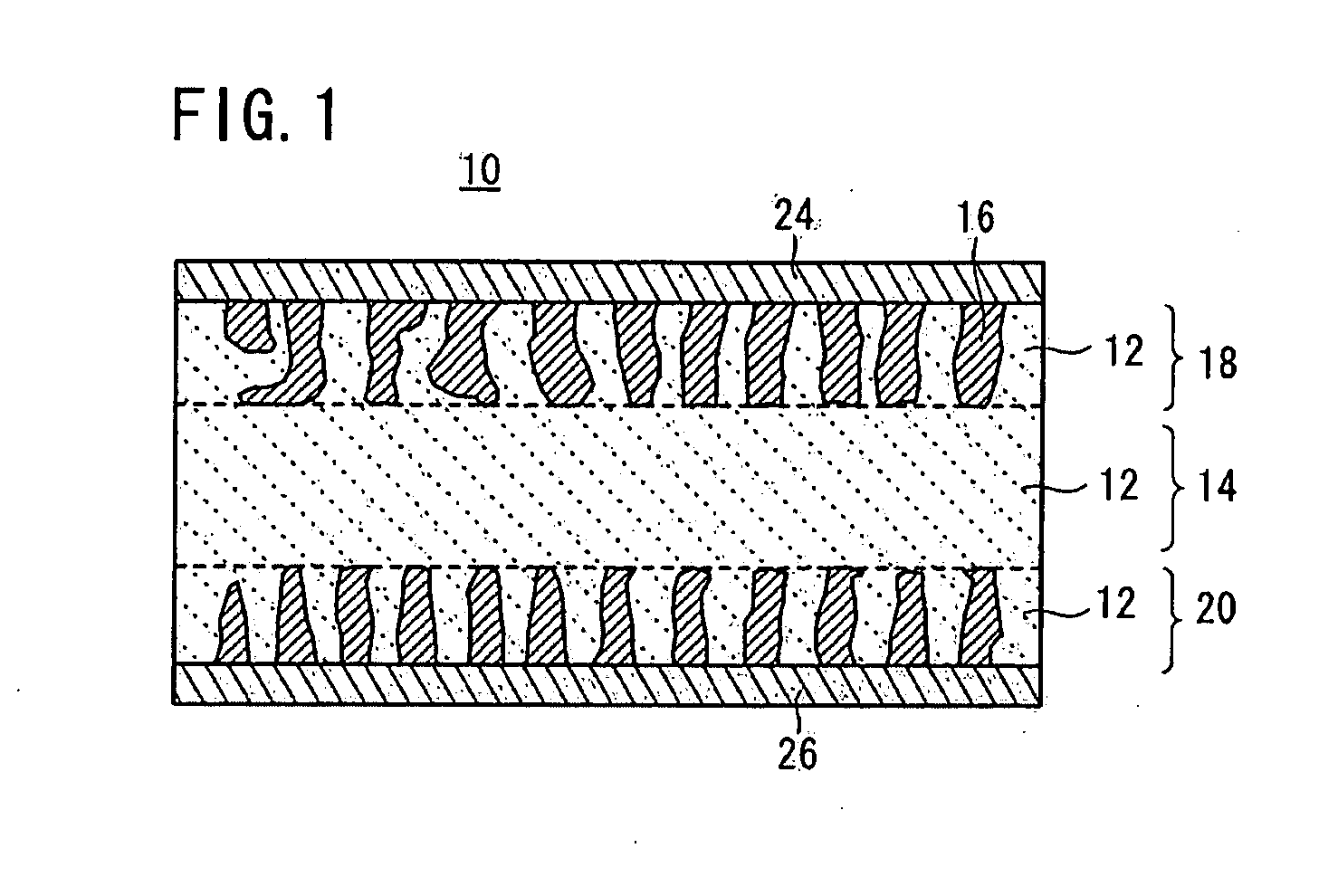All-solid-state cell
a technology of solid-state cells and cells, applied in the direction of non-aqueous electrolyte cells, cell components, sustainable manufacturing/processing, etc., can solve the problem of low interface reaction resistan
- Summary
- Abstract
- Description
- Claims
- Application Information
AI Technical Summary
Benefits of technology
Problems solved by technology
Method used
Image
Examples
first example
[0081]First Example of the all-solid-state cell 10 according to the embodiment will be described in detail below.
[0082]In First Example, the following Nasicon type phosphate compounds were used in a solid electrolyte material and an electrode active substance material.[0083]Solid electrolyte material: LAGP Li1.5Al0.5Ge1.5(PO4)3 [0084]Electrode active substance material: LVP Li3V2(PO4)3
[Preparation of Crystal Powder]
[0085]First, powders of Li2CO3, GeO2, Al2O3, and NH4H2(PO4)3 were mixed at the stoichiometric composition ratio and fired at 900° C. in the air, so that a crystal powder of the solid electrolyte material Li1.5Al0.5Ge1.5(PO4)3 (LAGP) (hereinafter referred to as the LAGP crystal powder) was prepared by a solid-phase synthesis method.
[0086]Meanwhile, powders of Li2CO3, V2O3, and NH4H2(PO4)3 were mixed at the stoichiometric composition ratio and fired at 930° C. in an Ar flow, so that a crystal powder of the positive (negative) electrode active substance Li3V2(PO4)3 (LVP) (h...
example 1
[0094]A binder was dissolved in an organic solvent, and an appropriate amount of the resultant solution was added to the LAGP glass powder and the LVP crystal powder. The mixture was kneaded in a mortar to prepare an electrode paste for screen printing. The obtained electrode paste was printed into an electrode pattern having a diameter of 12 mm on each surface of a fired solid electrolyte body (a base) having a diameter of 13 mm and a thickness of 1 mm. The printed electrode patterns were dried to form positive and negative electrodes, and thus a cell precursor was obtained.
[0095]The electrodes were bonded to the surfaces of the solid electrolyte base by firing at 600° C. for 40 hours using a firing furnace under an Ar atmosphere. Particularly, in Example 1, the cell precursor was placed in a hot press mold, and the hot press mold was subjected to a thermal treatment while pressing the cell precursor under a load of 500 kg / cm2 in the thickness direction of the solid electrolyte bas...
second example
[0106]An electrode precursor was prepared in the same manner as Example 1. All-solid-state cells were produced by firing the electrode precursor respectively, using various oxygen densities at the start of firing. Then, the charge-discharge property of each all-solid-state cell was evaluated.
[0107]The oxygen densities at the start of firing were 0%, 4%, 10%, and 16%.
[0108]Before the firing, air in a firing furnace was replaced by an Ar (argon) gas under vacuum. The oxygen density was controlled by changing the amount of the replacement gas, specifically by changing the time of the Ar gas introduction (flow time) before the firing. The firing furnace had an internal size of a width (W) of 360 mm, a height (H) of 420 mm, and a depth (D) of 280 mm.
[0109]After the start of the firing (the firing profiling), the firing was carried out in an Ar flow at 0.3 L / min. The firing temperature was increased from the room temperature to 600° C. at a rate of 200° C. / hour. When the firing temperatur...
PUM
| Property | Measurement | Unit |
|---|---|---|
| shrinkage | aaaaa | aaaaa |
| crystallization temperature | aaaaa | aaaaa |
| crystallization temperature | aaaaa | aaaaa |
Abstract
Description
Claims
Application Information
 Login to View More
Login to View More - R&D
- Intellectual Property
- Life Sciences
- Materials
- Tech Scout
- Unparalleled Data Quality
- Higher Quality Content
- 60% Fewer Hallucinations
Browse by: Latest US Patents, China's latest patents, Technical Efficacy Thesaurus, Application Domain, Technology Topic, Popular Technical Reports.
© 2025 PatSnap. All rights reserved.Legal|Privacy policy|Modern Slavery Act Transparency Statement|Sitemap|About US| Contact US: help@patsnap.com



